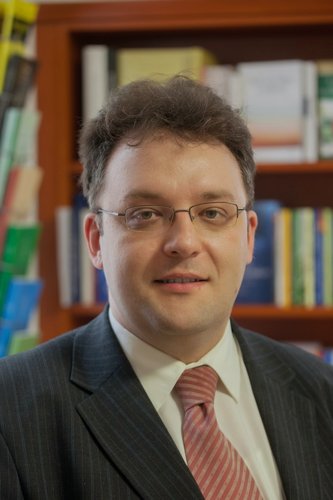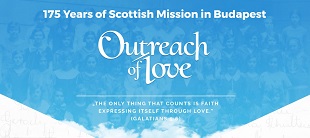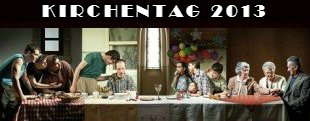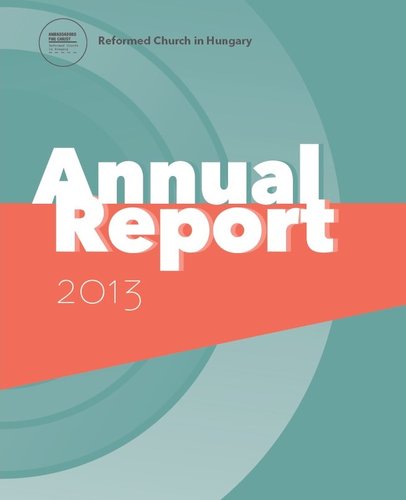Church, Cemetery, Joy
2014. április 19., szombatCompelling. Perhaps finding an article about graveside services on a youth webpage requires some explanation, especially since last time we discussed that young people are able to see the future of the Church. But maybe there is nothing to explain: the story of Easter is connected to cemeteries, a place of quietness.
 On the edge of spheres
On the edge of spheres
There are several forms of Easter services, for example vigils, sunrise services or cemetery services. Although in the ancient times, Christians held their services in catacombs and later built their churches on the graves of their martyrs, according to Ferenc Pap, reformed pastor, associate professor and director. Holding services in cemeteries is a new, 20th century, phenomenon. Although life and death are different spheres, in the culture of Christian services they are not so far from each other, often not even physically: the Jews and Christians in Jerusalem were often buried near sacred places. Likewise in Hungary until the end of the 18th century, the graveyards were always near the church buildings. – The history of burials cannot be evidenced with material remains since the wooden crosses, which were typical in Hungary, were ruined/collapsed after 25 years. The grand monuments only became widespread starting in the 19th century – emphasised Ferenc Pap.
Cemeteries as sacred places
- A cemetery is a sacred place that is not handled as a church, but several patterns shown in graveyards are identical to behaviours in churches. A Christian person thinks about the places of passing as our early creed expresses it: we hide our deceased among the dead. This expresses deep hope: God is the Lord of life and death, Lord of the living and the dead – adds the associate professor from Károli Gáspár University. We can witness this hope in all Sunday services, because on every such occasion we celebrate resurrection, Christ’s victory over death.
Renewed tradition
It’s a typical pattern of Easter cemetery services that Christ’s resurrection is a connection with the cemetery as well. Sometimes it is held in the funeral home or often in one of the community areas. Compared to the services on All Saint’s day, which often deal with finding solace, Easter services carry the message of the Christian religion’s joyous hope: the state of passing where one can do no more for himself nor others. Yet, it is the scene of Christ’s ultimate victory, so it is a place for joy at the same time. – It’s a wonderful thing that the Church can bring such traditions back and find their value, adapting it to the changing world of today. The Church has a great opportunity to find answers for society’s questions, examining what can be brought back from the rich historical traditions – Ferenc Pap tells us regarding the traditions of cemetery services.
Complex celebration
Man is a celebrating being. The congregation is a ritualistic community who can celebrate together and experience the complex festive occasion of the Sunday service, which contains stillness, worship, repentance, forgiveness, mourning and joy all at once. According to this, the question arises: is the commendation of the church affecting the cemetery or it is rather the mourning of the cemetery that can be felt during our community occasions? Pap Ferenc cannot see a direct connection between these things but he adds: it can actually happen that even though the opportunity is given there is no joy of Christ’s resurrection in community occasions, not even with several liturgical elements that help us with it. – Perhaps it is morbid to sing hallelujah in the cemetery, but it also contains a creed: at Easter the song of resurrection should be blaring, because while standing among the tombs, it is our certainty that Christ has risen – the associate professor explains.
Do we stop at Good Friday?
In Ferenc Pap’s opinion, it is only an empty phrase that Good Friday is the biggest celebration for Christians – if we stopped at Good Friday then all our hope would be in vain. When we say in the Lord’s liturgy at the Table: “give witness to the Lord's death until he comes,” then we think of the entire life, since Good Friday and Easter cannot be separated, moreover we can only understand the life of Christ as a whole. Like this there is a place for the Lord ’s Supper in the liturgy at Christmas and we can look forward even in the morning of Good Friday. According to the Churches, we can see from this point of view that the infant’s swathing already refers to that winding-sheet in which Jesus’ body was wrapped before the burial, and which the women find empty at the dawn of Easter.
The associate professor concludes: dividing the celebrations into separated days is an invention of the 4th century. Of course it is important to see: the way of our mourning and wailing have more century-long traditions. The quietness of Good Friday has its own place - this prepares us for the joy and high spirit, which is also expressed by the rhythm and melody of the the hymn: "Christ is risen, taken by death, rejoice, Christ is our comfort, Alleluia!"
Written by Zsuzsanna Bagdán; translated by Anita Polgári
Originally published in Reformátusok Lapja
Contact us
Click here if you are interested in twinning.
Reformed Church in Hungary
Address: H-1146 Budapest, Abonyi utca 21.
PO Box: 1140 Budapest 70, Pf. 5
Email: oikumene@reformatus.hu
English, German and Korean language services in Budapest
Links
Recommended articles
-
Pastoral Letter in the Light of the Pandemic
Bishop Dr. István Szabó sent a pastoral letter of encouragement to the ministers serving in RCH’s congregations, expressing his gratitude for the persistence and creativity of the pastors.
-
RCH Joins in Pope's Call for Prayer
RCH published the call on congregations to join the initiative of Pope Francis, supported by ecumenical organisations, to unite in praying the Lord’s Prayer on Wednesday, 25 March, at noon.
-
English Speaking Worship Services Online
Each Sunday at 11 AM (CET) the St. Columba's Church of Scotland in Budapest, the international community of RCH invites you to join the worpship service on its facebook page.
-
Test of Humanity and Companionship
Reformatus.hu asked Dr. György Velkey, Director General of the Bethesda Children’s Hospital of RCH about the challenges of health care workers and ways of prevention against the pandemic.
-
All Church Events Suspended
In light of the coronavirus the Presidium of RCH requested congregations to suspend all church events with immediate effect. Beside restrictions, it calls for prayer, sobriety and responsibility.











